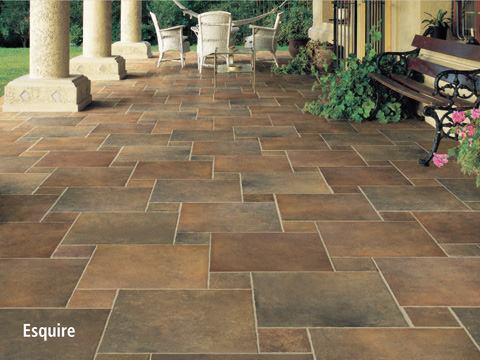Stepping Up
A great exterior tile job starts with proper installation.
According to Jim Dougherty, Florim USA executive vice president of sales and marketing, “Many people are hesitant to use tile outside. But most porcelain tiles are suitable for exterior applications if they are installed properly.”
According to the Tile Council of North America, exterior installations must drain water from the system before it is absorbed into either the tile or the layers below the tile. Because most tiles are water-impermeable, the only water that can get in goes through the grout joints or the substrate itself.
“The edges of the tile need to be fully covered in the adhesive” to prevent water seepage, Dougherty suggests. “And the change of planes need to be caulked, not grouted, so that they don’t crack.”
Additionally, the council cautions that fresh concrete should cure for at least 14 to 28 days before tiling. When it comes to exterior work, says Fasan, “We have to be far more technical in terms of materials and methods” than for anything interior.



